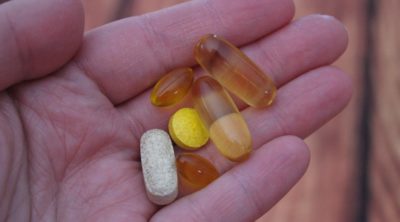
Teeth whitening strips are the most convenient method to whiten teeth at home. But gum irritation and teeth sensitivity are the side effects associated with these strips. Nevertheless they are popularly used by many people. The following article provides information about the various side effects associated with these strips.
Many professionals offer teeth whitening services; however, the teeth whitening strips are the most popular home remedy for yellow or discolored teeth. These whitening strips are less bulky and easy to carry around as compared to the older, whitening trays. Also, these can be easily used at home by an individual. After whitening toothpaste, these strips are the least expensive of the various teeth whitening products. Due to all these advantages, the strips have become quite popular. However, there are certain side effects that raise some concern about their use.
What are Teeth Whitening Strips
They are small polyethylene strips that are coated with a layer of hydrogen peroxide. It is this layer of hydrogen peroxide that acts as the bleaching agent. The teeth whitening kits have separate strips for the teeth of the lower and the upper jaws. These strips have to be pressed firmly against the teeth and left for about 30 minutes. This should be done twice a day at 12-hours interval. This is generally done for 7 to 14 days, depending on the strength of the bleaching agent used. These strips are available in concentrations that range from 6% to 10%. As they are affordable and easy to handle, they are very popular among people.
Side Effects
Despite all the advantages, there are a couple of side effects of these strips. These are typical of those which result due to use of hydrogen-peroxide based teeth whitening methods. They include:
Tooth Sensitivity
Almost 25% to 30% of users experience tooth sensitivity and it is not just the case with first time users. This results in increased sensitivity when hot or cold food items come in contact with the teeth. It also causes inflammation of the tooth nerve due to exposure to the bleaching agent. This discomfort resolves gradually within a couple of days after the treatment. Some relief can be obtained by using a toothpaste for sensitive teeth in place of the regular toothpaste. In case of a history of tooth sensitivity, an anti-sensitive toothpaste could be used about a week before starting with the procedure. A visit to the dentist is also important as many times it is a case of tooth decay. The teeth become increasingly sensitive once they are exposed to a bleaching agent.
Gum Irritation
Gum irritation is another common side effect of this treatment. This may not be solely due to the bleaching action of hydrogen peroxide but also due to certain physical reasons as seen in whitening trays. However, physical trauma to the gum is ruled out in case of whitening strips as they use thin strips that fit comfortably over one’s teeth. Nevertheless, gum irritation due to the bleaching agent is a common problem. The edges of the strips are straight as opposed to the arched shape of the gum along each tooth. This leads to the bleaching agent coming in contact with the soft tissue of the gum along the edges of the teeth. The result is gum irritation. However, the incidence of gum irritation is the same when whitening trays are used. This general teeth whitening problem is mild and usually dissipates within a few days. Nevertheless, one must ensure to wash off every residue of the bleaching agent while cleaning one’s mouth after the whitening treatment is over.
Use of chemicals definitely yields faster results. However, there are certain vegetables like carrots, broccoli, and cucumber are the best way to whiten teeth, as they are safe and have health benefits as well.
The side effects are mild and resolve within a couple of days. Nevertheless, it would be best to start with strips of lower concentrations and then move on to stronger versions depending upon how the teeth react to the bleaching agent. Lower concentration strips will require a longer time; however, they are safe. Also, dental check ups are important to minimize the side effects or complications.


